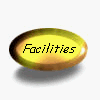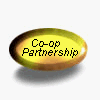May 27, 1999
Illinois Steel Mill Ranks Among Best and Worst in Nation for Pollution
Prevention
New Environmental Defense Fund (EDF)Website Ranks
Integrated Iron And Steel Mills And Provides Strategies To Prevent Pollution
A new national pollution prevention performance ranking of integrated iron
and steel mills by the Environmental Defense Fund (EDF) indicates that the Riverdale Acme
Steel mill in southeast Chicago, which has a history of working with its
neighbors to reduce pollution, ranks among the top third of integrated mills in the US for
pollution prevention. In contrast, the National Steel mill in Granite City, IL, ranks
among the worst third of integrated mills in the US for pollution prevention.
According to the US Environmental Protection Agency's Toxic Inventory
Release database, the Acme Steel mill released over 186,000 pounds
of toxic chemicals in 1996 – or .2 pounds for every ton of steel. The National Steel
mill in Granite City, IL, near St. Louis, MO, released over 6 million pounds of toxic
chemicals in 1996 - or 1.8 pounds for every ton of steel - more than six times the toxic
chemicals released per ton by the average high-ranking integrated mill in the US, and
nearly 10 times the toxic chemicals released per ton by Riverdale's Acme Steel
mill. National Steel also did not report recycling any of their waste metals.
The integrated iron and steel mill rankings can be found on the new EDF
Iron and Steel Community Guide website (http://www.edf.org/communityguides),
a powerful tool for facility neighbors to forge a dialogue with industry. The guide
describes mill processes and strategies for preventing pollution. For example, it suggests
cleaner alternatives to the current coke making process, a highly-polluting part of iron
and steel production.
"With just a few mouse-clicks on EDF's Iron and Steel Community
Guide, neighbors of these plants can learn how facilities in their area are doing in their
efforts to prevent pollution," said Lois Epstein, EDF senior engineer. "The
website will help the public work with integrated iron and steel mills to reduce their
pollution."
To create the rankings, EDF tracked toxic chemical releases and transfers
from EPA's 1996 Toxics Release Inventory database, and carbon monoxide and particulate
releases from EPA's "AIRS" database, obtained in March, 1999. (When recent AIRS
data were not available, EDF obtained the data from the states.) EDF determined which of
the country's 20 integrated iron and steel mills were performing the best and worst in
preventing pollution on a per ton of steel basis. The rankings focused only on the
nation's integrated iron and steel plants, which are larger and generally more polluting
than the more common "mini mills."
"All mills should be doing more to reduce pollution," said
Joanna Hoelscher of Citizens for a Better Environment, a Chicago-based environmental
group. "However, Acme Steel has truly worked to be a good
neighbor in southeast Chicago and can serve as a model to other steel manufacturing
facilities, especially those like National in Granite City."
The Environmental Defense Fund, a leading national, NY-based nonprofit
organization, represents 300,000 members. EDF links science, economics, and law to create
innovative, equitable, and economically viable solutions to today's environmental
problems.
[ Home ]
[ History ]
[ Products ]
[ Facilities ]
[ What's New ]
[ Co-op Partnership ]
[ Safety ]
[ Foundry Coke ]
[ Metallurgical Coke ]









